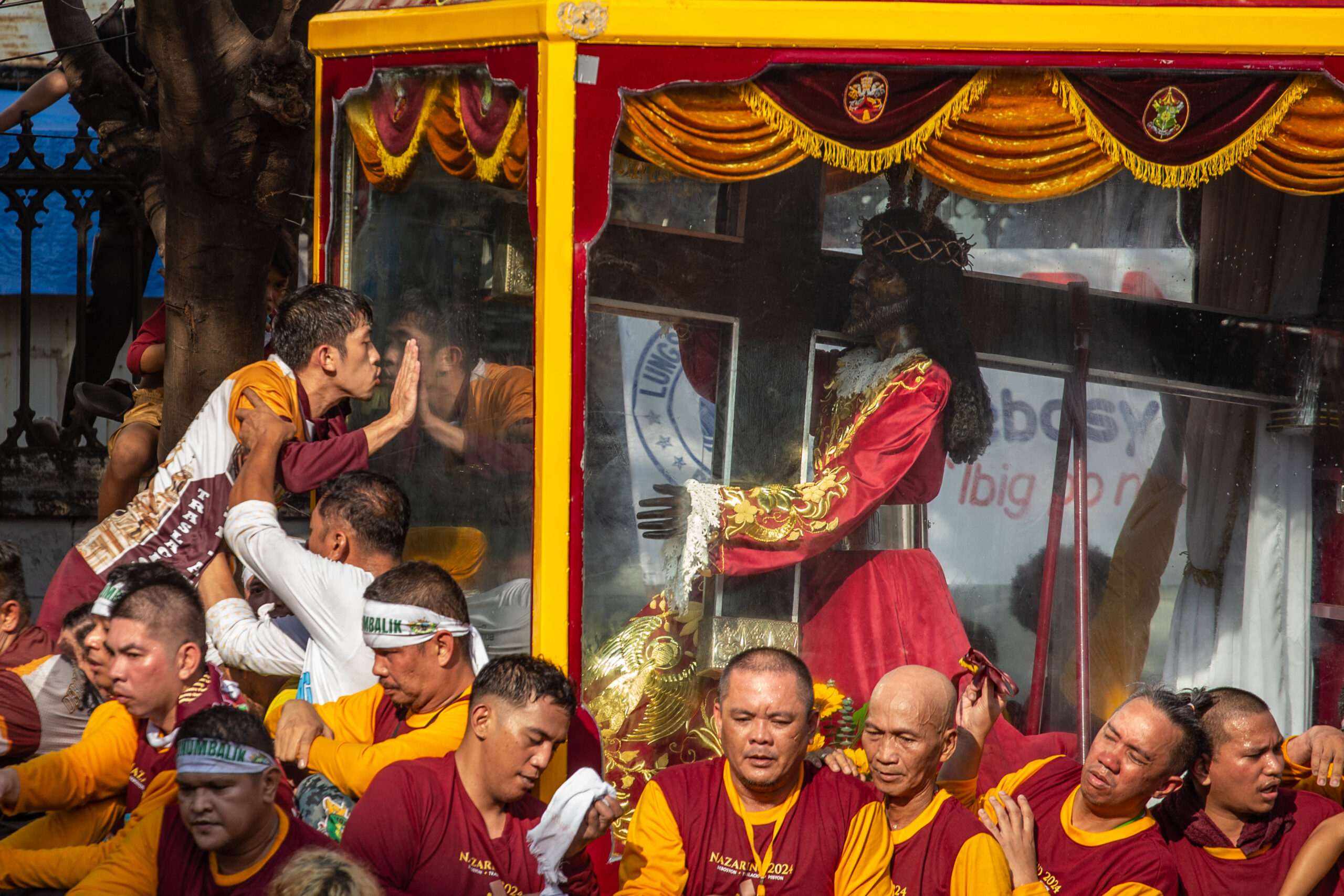
A catholic devotee kisses the glass cover of the Black Nazarene during the annual religious procession in Manila on January 9, 2024. Hundreds of thousands of Catholic faithful swarmed a historic statue of Jesus Christ as it was pulled through the streets of the Philippine capital on January 9, in one of the world’s most extensive displays of religious devotion. (Photo by Earvin Perias / AFP)
MANILA, Philippines — The image of the Black Nazarene and its platform remained in good condition after the 15-hour procession on Tuesday, the Quiapo Church communications coordinator Silgen Cabrito said on Wednesday.
“No damage was reported on the andas (carriage) and the image,” Cabrito told reporters on Viber.
Cabrito also said the image is set to be displayed again inside the Quiapo Church on Wednesday.
More than six million participated in the Feast of the Black Nazarene.
READ: Black Nazarene returns to Quiapo Church
The image of the Black Nazarene arrived at Quiapo Church from the Quirino Grandstand in Rizal Park, Manila, after 15 hours.
The carriage of the Black Nazarene left the Quirino Grandstand at 4:45 a.m. and arrived at the church at 7:45 p.m.
The annual procession is a reenactment of the 1787 Traslacion — which means “solemn transfer” — of the image from its original shrine in Bagumbayan, the present Rizal Park, to the Quiapo Church.
The original statue of Black Nazarene was carved from mesquite wood by an unknown sculptor. It arrived in Manila from Mexico on May 31, 1606.
The image was partially destroyed in 1945 during the battle for Manila in the Second World War. A replica, made by a renowned saint carver Gener Manlaqui, used the original head of the image.
READ: Translating Jesus